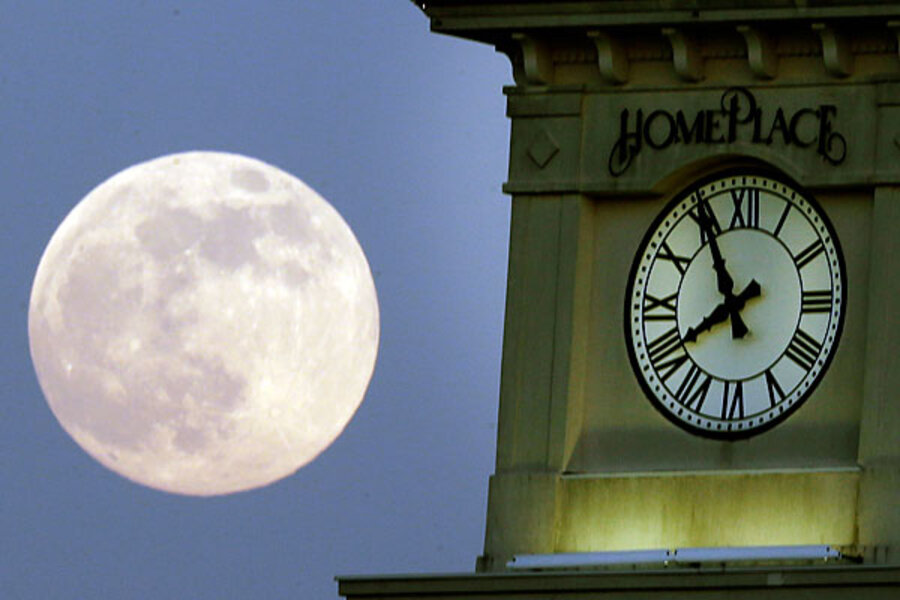Supermoon: Why it's the best lunar show in the solar system
Loading...
"Supermoon" officially arrived at about 7 a.m. Eastern Daylight Time Sunday morning, with the moon making its closest swing by Earth this year. About a half hour later, the moon reached full status, making it appear 12 percent larger and 30 percent brighter than a regular full moon.
Don't worry if you missed it. The effect should still linger for a few nights, meaning Sunday, Monday, and even Tuesday should give a good sense of this year's supermoon.
And social media was alight with the event, with pictures of Saturday night's supermoon making an appearance from Facebook to Instagram.
The show is the product of a cosmic quirk. Since planets and moons orbit in ellipses, not circles, there are times when they are closer to what they're orbiting and times when they're farther away. For moons, the point when they're closest to their planet is called perigee, the point farthest away is called apogee.
For Earth and the moon, perigee and apogee happen once each month, since the moon orbits the Earth once every 27 days. But because of small inconsistencies in the orbits, the moon's closest approach and its farthest distance are always slightly different.
The moon hit its monthly perigee Sunday morning, but what makes it worthy of the name "supermoon" was that it was the closest perigee of 2013. Moreover, since it coincided almost perfectly with a full moon, the effect was enhanced.
The moon's farthest apogee this year has already happened and is set to repeat itself next year during the Jan. 15, 2014, full moon. To see the visual difference in size between a perigee and apogee moon, click here.
But what makes the moon so special? If everything in the solar system orbits in an ellipsis, shouldn't we have a "supersun," too.
In fact, we do. Since we orbit the sun once a year, supersuns only happen once a year. Our closest swing to the sun, called perihelion, also already happened this year, and will happen again on Jan. 4, 2014. (An "un-supersun," when the sun seems smallest at aphelion, is just around the corner: July 5.)
But will there be this much buzz next January with sungazers filling Twitter with pictures of a gigantic sun? Don't count on it.
The reason? the sun is obviously much farther away from Earth than is the moon, so the effect is not so noticeable. For Earth, the distance between aphelion and perihelion is about 3 million miles. But even at perihelion, the Earth is still 91 million miles from the sun.
In addition, Earth's orbit around the sun is more nearly circular than is the moon's orbit around us, with only Venus and Neptune having more circular orbits than Earth. Mercury has the most eccentric orbit – ranging from a perihelion of 29 million miles to an aphelion of 43 million miles – meaning it has a truly dramatic supersun (if you can stand the 800 degree Fahrenheit temperatures on the sun-side surface).
By contrast, the moon's orbit around Earth is the most elliptical orbit of any major moon in the solar system. Combine that with the fact that the moon is comparatively close to Earth, so it looks large in our skies, and supermoon earns its name.








